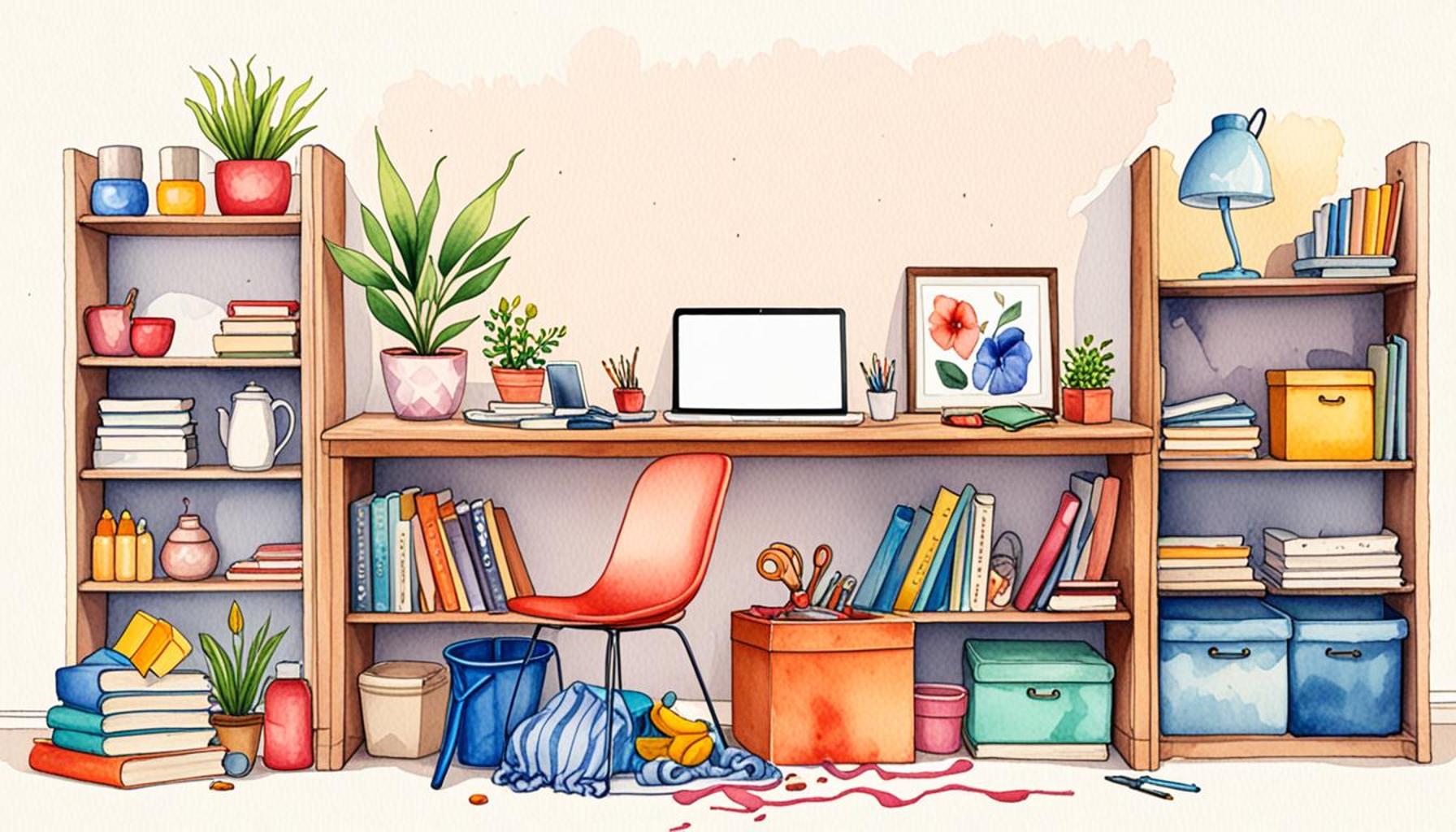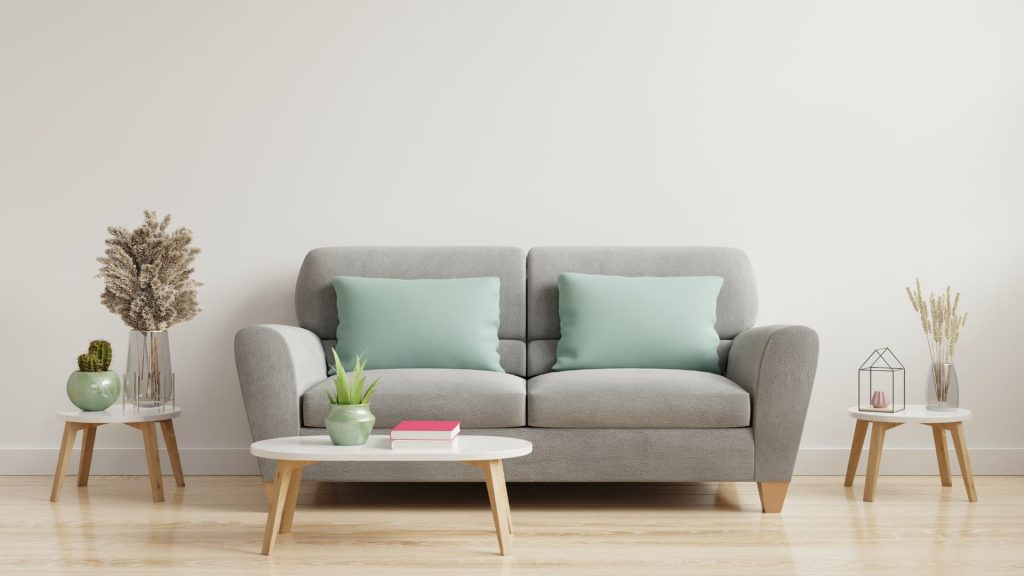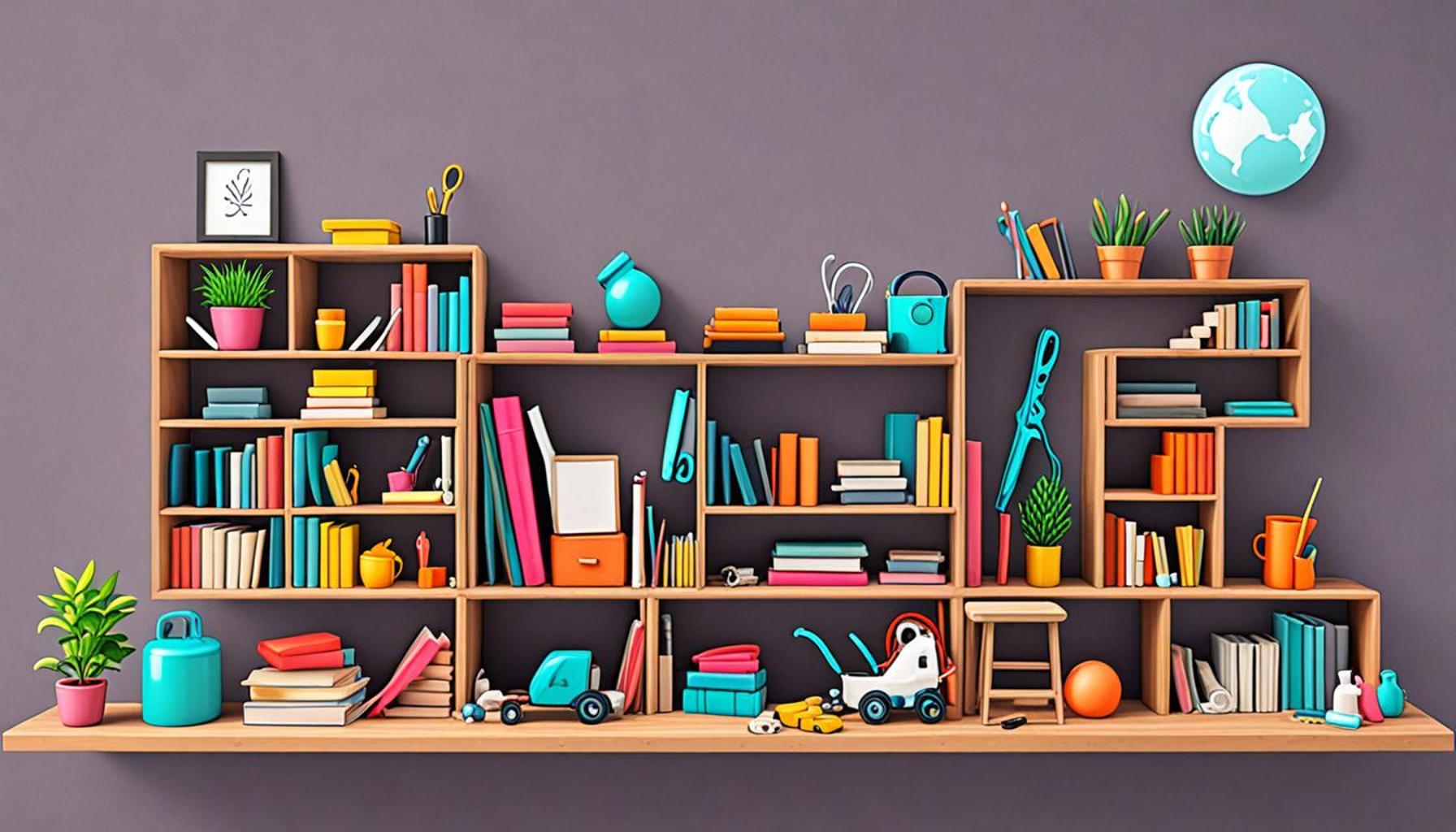Decluttering Techniques: How to Simplify Your Space in 5 Steps

Uncover the Benefits of Decluttering
Living in a cluttered environment can often lead to increased stress and decreased productivity. A well-organized space not only enhances your mental clarity but also promotes a sense of calm. It’s remarkable how simplifying your surroundings can bring about significant changes in your daily life. By establishing a minimalist mindset, you can discover the joy of living with less while enjoying the freedom that follows.
Why Declutter?
Decluttering is more than just clearing out excess items; it is about creating a functional space that positively impacts your overall well-being. Here are some compelling reasons to embrace decluttering:
- Enhanced Focus: A tidy environment helps you concentrate better. Imagine working from home in a space that is chaotic versus one that is organized; the latter allows you to focus on your tasks without the distractions of disarray.
- Reduced Stress: Clutter can trigger feelings of overwhelm and anxiety. Studies have shown that a cluttered environment can elevate cortisol levels, leading to heightened stress. In crowded cities like Lagos, where daily life can be fast-paced, a serene home environment becomes ever more important for mental health.
- Improved Creativity: An organized area opens up possibilities for innovative thinking. When your surrounding space is not filled with an overabundance of items, your brain has the freedom to envision fresh ideas. Artists, writers, and thinkers have long recognized the importance of an uncluttered workspace for fostering creativity.
Challenges Faced
For many in Nigeria, keeping a clutter-free space may seem daunting due to factors such as limited storage options, communal living, and a fast-paced lifestyle filled with commitments. Small apartments may lack sufficient storage solutions, making it all too easy for clutter to accumulate. Additionally, cultural norms may lead to the collection of items that hold sentimental value, complicating the decision to let go.
However, the journey to organizing your space is navigable with effective techniques that cater to your specific situation. Implementing small changes, such as maximizing vertical storage or investing in multifunctional furniture, can create a more harmonious living environment.
Are you ready to embrace a simpler, more tranquil lifestyle? In this article, we will explore five actionable decluttering techniques designed to transform any space into a harmonious haven. Whether you’re working with a small room in a bustling city or a busy household in a rural area, these steps are adaptable to suit your needs.

Get Started with Decluttering!
Unlock the potential of your home by simplifying your space. Let’s dive into the steps that will help you reclaim your peace and enjoy a fulfilling life in a serene environment. Consider starting today by identifying one area in your home that feels overwhelming and take the first step toward a fresh start.
By fostering a lifestyle focused on decluttering, not only will you create a more inviting home, but you will also cultivate a mindset of intentionality—ensuring that each object in your space serves a purpose and contributes positively to your daily life.
SEE ALSO: Click here to read another article
Step 1: Assess Your Space
Before diving into the decluttering process, it’s essential to take stock of your environment. Assessment provides a clear understanding of what you have, what you need, and what can be let go. Start by walking through each room in your home, notebook in hand, and jot down any areas that feel cramped or overwhelming. You might discover that certain spaces, like your living room or kitchen, require more immediate attention than others.
Consider using the following questions as a guide during your assessment:
- What items do I use regularly? Identify the items that serve a purpose in your daily life, such as kitchen utensils or essential electronics.
- Which items have sentimental value? Recognizing keepsakes is crucial, but also consider how many similar items you own. Prioritize the ones with the deepest meaning.
- Are there broken or unused items? This may include anything from a faulty appliance to unworn clothing. Assessing their presence allows you to make informed decisions about what should stay or go.
Understanding the Psychology of Clutter
The act of decluttering can often feel emotional, particularly in places like Nigeria, where cultural significance is often attached to items. Many people grapple with letting go of possessions due to feelings of guilt or nostalgia. It is important to approach decluttering with a mindful perspective. Understanding that your attachment to objects often stem from experiences rather than the items themselves can help ease this process. Remember, each item does not hold significance merely by existing; it is how it enhances your life that matters.
To help you gain clarity, consider creating a “Keep,” “Donate,” and “Dispose” box. As you assess each item, place it in one of these boxes based on its function and relevance in your life. By separating items into those categories, you will find that the decision-making process becomes more straightforward and manageable.
Step 2: Set Specific Goals
Simply stating that you want to declutter is often not enough. Setting specific goals is crucial for maintaining motivation and tracking progress. Determine what you want to achieve from this decluttering journey. Do you want a clearer workspace to enhance productivity? Are you hoping to create a serene living space where you can unwind? By pinpointing your objectives, you’ll have a guiding light to steer you through the process.
Here are some insightful tips for goal-setting:
- Break It Down: Instead of aiming to declutter your entire home at once, tackle one room or area each week. This makes the task feel less daunting.
- Set a Timeline: Establish a clear timeframe for when you want to achieve each goal. Setting deadlines creates urgency and can help you stay committed.
- Visualize the Outcome: Picture how you want each space to look and feel. This visualization will serve as a motivational tool as you move through your decluttering journey.
With a keen eye and specific goals in mind, you’re now prepared to embark on a decluttering adventure that will transform your living space. The next step involves diving even deeper into the process, ensuring each item on your path serves a purpose in your life.
Understanding the Essence of Decluttering
Decluttering goes beyond simply removing unwanted items from your space. It’s about embracing a lifestyle that prioritizes simplicity and clarity. By adopting effective decluttering techniques, you can nurture a serene environment that promotes peace and productivity. As you embark on the journey of simplifying your space, consider the importance of each object in your surroundings. Are they serving a purpose or merely taking up space? This fundamental question can guide your decision-making process.
Step 1: Assess Your Space
Begin your decluttering journey by thoroughly assessing each area of your home or workspace. Take a systematic approach by tackling one space at a time. Create a clear vision of how you want each area to look and feel. Making a checklist can help keep you focused and motivated throughout the process. This initial step is crucial as it lays the foundation for subsequent decluttering efforts, ensuring you have a plan to follow.
Step 2: Use the Four-Box Method
The four-box method is an effective and engaging technique that involves using four designated boxes labeled: Keep, Trash, Donate, and Relocate. As you sort through your belongings, place each item in one of the boxes based on its relevance and utility in your life. This structured approach not only streamlines the decision-making process but also makes it easier to visualize what truly matters to you.
Step 3: Embrace Minimalism
Minimalism doesn’t require drastic changes but encourages a thoughtful approach to consumption. Consider keeping only items that bring you joy or serve a specific function. Emphasizing quality over quantity can drastically transform your environment and foster mindfulness. Choose to invest in fewer, higher-quality items that resonate with your personal style, leading to a more cohesive and simplified space.
Step 4: Create a Decluttering Routine
Maintaining an organized space is an ongoing commitment. Establish a regular decluttering routine, whether it’s monthly or seasonally, to prevent clutter from accumulating again. This proactive strategy not only fortifies your decluttering practices but also encourages a conscious lifestyle that values simplicity and organization.
Step 5: Celebrate Your Progress
Every step taken towards decluttering should be recognized and celebrated. Acknowledge the transformations in your space; they represent the effort and dedication you’ve invested in creating a more inviting environment. Share your journey with friends or on social media to inspire others to take similar steps towards simplifying their lives. Not only will this reinforce your commitment, but it will also foster a supportive community around decluttering and minimalism.
| Category | Key Features |
|---|---|
| Clarity | Transformative approach to living space. |
| Simplicity | Encourages a mindful lifestyle, alleviating stress. |
By incorporating these decluttering techniques into your life, you’ll not only simplify your space but also create a sanctuary that fosters well-being and productivity. Stay tuned for more insights and practical tips on how to maintain your newly decluttered environment!
LEARN MORE: This related article may interest you
Step 3: Declutter by Category
Having assessed your space and established your goals, the next step in your decluttering journey is to tackle your belongings by category rather than by location. This approach is more effective as it allows you to see the sheer volume of items you own in each category, making it easier to identify what is necessary and what can be discarded. This technique, popularized by organization expert Marie Kondo, emphasizes the importance of being thorough.
Begin with the categories that are least emotionally charged; clothing or books, for example, often present less of an emotional hurdle than sentimental photographs or household gifts. Here are some common categories to consider:
- Clothing: Start by taking all your clothing out of drawers and closets. Once laid out, analyze each piece. Ask yourself if you’ve worn it in the past year, if it fits, and if it brings you joy.
- Books: Gather all your books in one spot and evaluate whether they align with your current interests or if they’ve simply taken up shelf space. If you haven’t read it or plan to, consider donating it.
- Kitchenware: Check your kitchen cabinets for utensils, gadgets, and dishes. Eliminate duplicates and non-functional items to make your cooking space more efficient and welcoming.
In Nigeria, where communal dining is prevalent, you may find that certain kitchen items hold more sentimental value than they should. Be mindful of this attachment but stay focused on functionality as you declutter these spaces.
Step 4: Organize Efficiently
Once you have decided what to keep from each category, the next challenge is organization. Proper organization enhances not just aesthetics but also functionality in your space. Think about how often you use each item when deciding where to store it. Location matters when arranging items, as it dictates how easily you can access them.
Here are some organizing techniques that can be easily applied:
- Use Clear Containers: Transparent storage bins allow you to see at a glance what you have, reducing the need to dig through hidden items.
- Label Everything: Labels on containers and shelves can significantly improve organization and ensure that everyone in the household knows where things belong.
- Vertical Space Utilization: Take advantage of wall space by using shelves or hooks for items like kitchen utensils or tools, optimizing available space while keeping your floors free.
Nigeria’s hot climate can make keeping things organized a bit tricky when it comes to maintaining cleanliness. Opting for easy-to-clean storage solutions can help in achieving a healthier, minimalist environment.
Step 5: Maintain Simplicity
After achieving a decluttered and organized space, it is crucial to focus on maintenance. The last step in the decluttering process is perhaps the most critical. Implementing strategies to keep your spaces simplified will avoid the clutter from creeping back in.
Here are some maintenance tips to consider:
- Practice the ‘One In, One Out’ Rule: For every new item you bring into your home, consider letting go of an existing item that no longer serves a purpose.
- Schedule Regular Decluttering Sessions: Block out time each month to review your spaces. This makes it easier to stay on top of accumulation.
- Involve Your Family: If you share your space with others, communicate the importance of maintaining a decluttered environment, encouraging them to participate actively.
By embedding these techniques into your lifestyle, you not only simplify your space but create a more meaningful connection with your environment. As you navigate through this journey, remember that decluttering is a continual process, and flexibility will yield the best results as you adapt over time.
LEARN MORE: This related article may interest you
Conclusion
In a world where possessions often outnumber the spaces we live in, the journey to simplify your space can feel overwhelming yet liberating. By following the five essential steps—assessing your space, decluttering by category, organizing efficiently, and maintaining simplicity—you pave the way for a more functional and harmonious environment. These decluttering techniques not only enhance the aesthetic quality of your home but also encourage mental clarity, making day-to-day living far more enjoyable.
Particularly in Nigeria, where communal living and hospitality are cherished, it’s crucial to distinguish between items of true need and those that merely add clutter. By embracing a minimalist approach, you allow your space to breathe, ensuring that each item present serves a purpose. Furthermore, adopting maintenance practices like the ‘One In, One Out’ rule encourages mindfulness in consumption, fostering sustainable lifestyles.
Ultimately, decluttering is not merely a one-time activity; it evolves into a lifestyle choice that reflects the values of simplicity and intentionality. As you embark on this continuous journey, remember that it’s okay to revisit steps as needed. Every small effort contributes significantly to creating an inviting and peaceful home, allowing you to connect more deeply with your living space. So, arm yourself with these techniques, and take the first step toward transforming your environment today.



